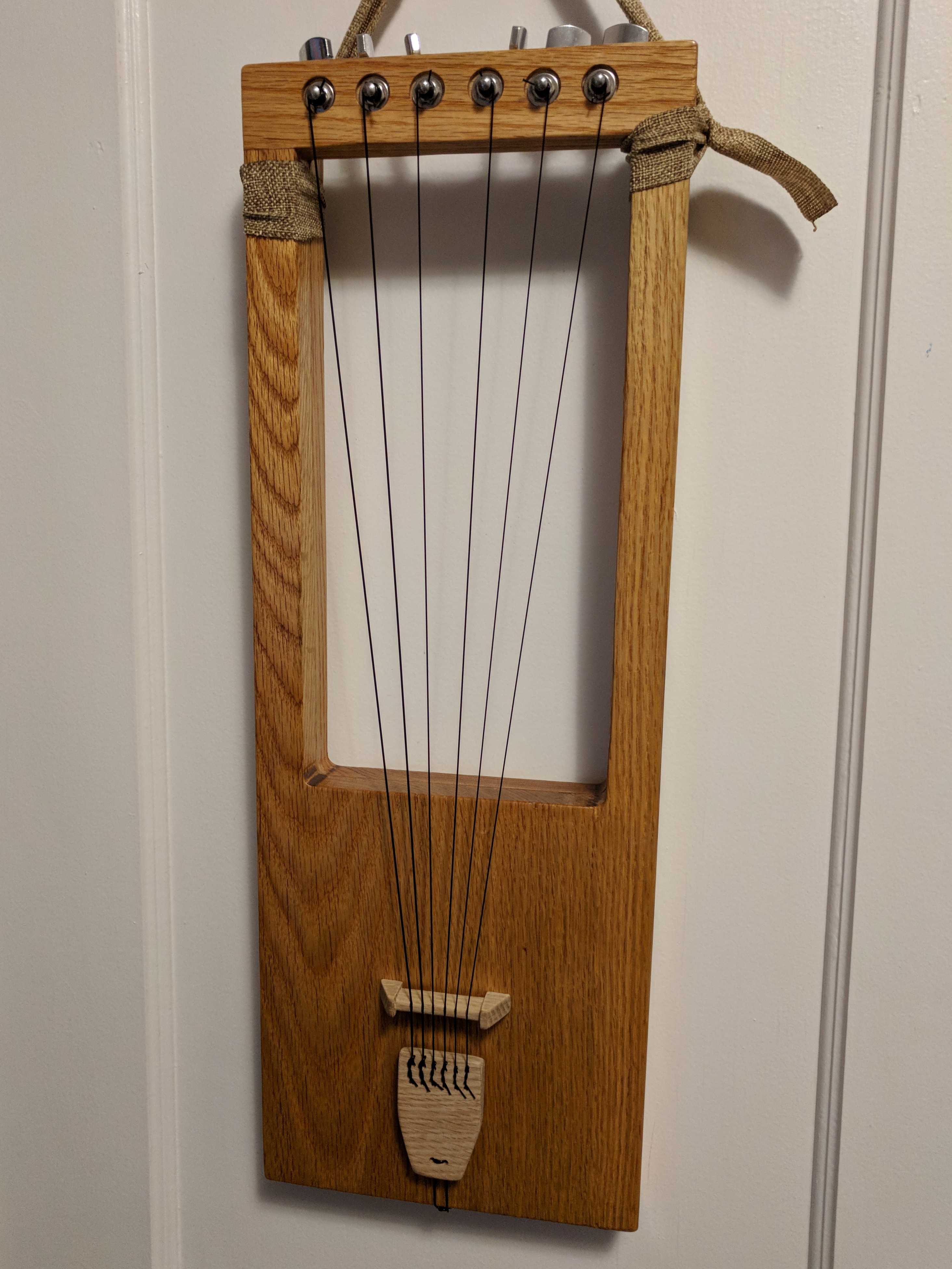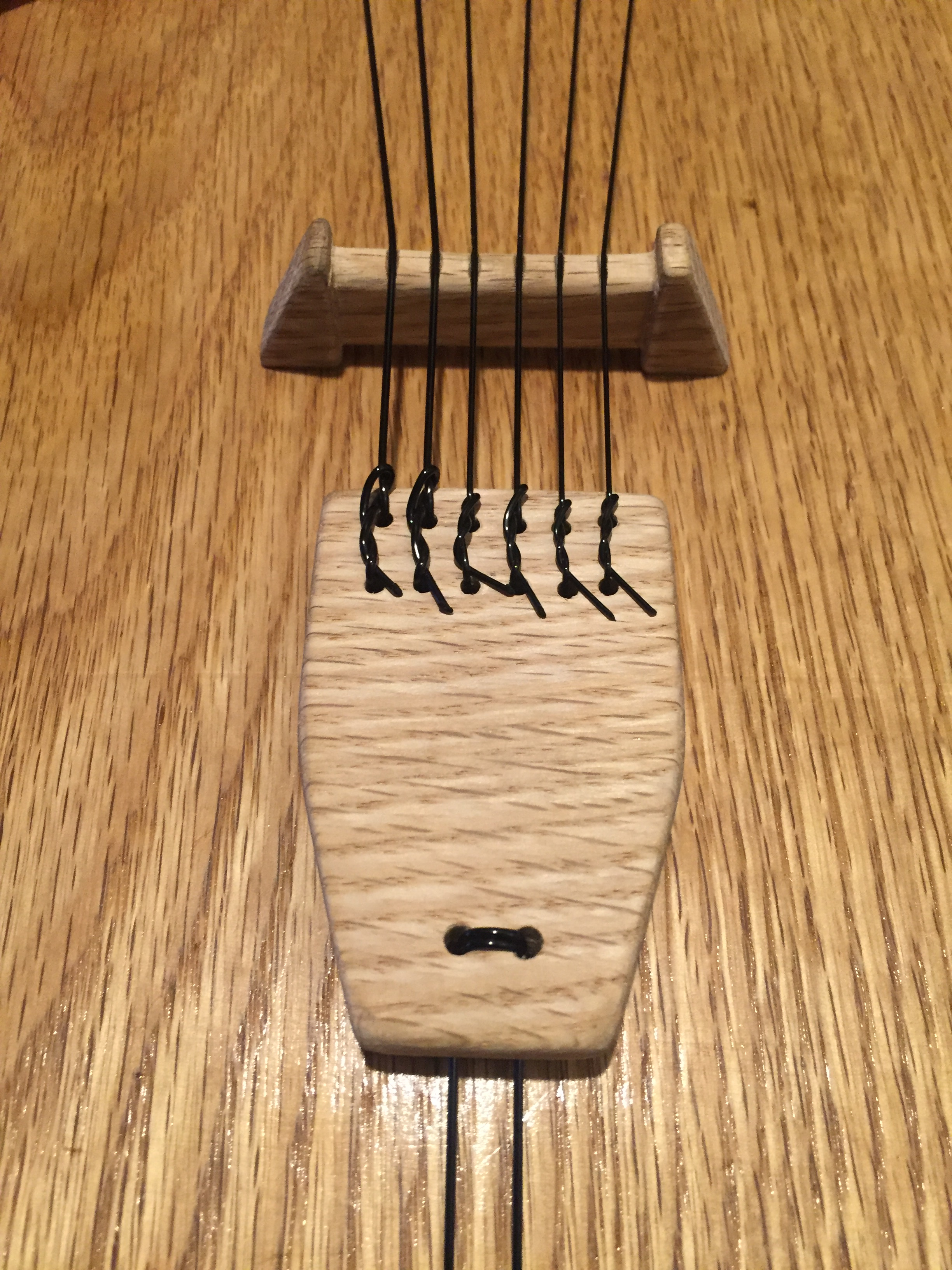Saxon Lyre
Other Works
A Saxon lyre (also called the Germanic or Anglo-Saxon lyre) is an early Germanic stringed instrument that was apparently banned in England by the Normans, which is why it's largely absent from any common frame of reference. If I recall correctly, I only learned about the instrument by coincidence after being caught in a Wikipedian black hole. What knowledge we have of the Saxon lyre specifically is really only archaeological; lyres were rather more famously played in Greek antiquity, though they might be easily taken for a sort of harp, but there are some notable differences between Saxon and Greek lyres that caught my attention.
The lyre-harp continuum is visually characterized on first glance by a relatively wide string spacing and large number of strings (modern extended-range guitars notwithstanding) with no fingerboard. The harp, familiarly, is strummed and plucked with both hands, while the kithara and Greek lyre are in fact most often played with a plectrum akin to a shamisen's - a large one, that is, held in the hand, as opposed to guitar picks which are held in the fingers.
The Saxon lyre is, first and foremost, near-impossible to find exhaustive information on - remember its outlawing in England - but was apparently played by a method known as block-and-strum. The lyre, assuming right-handedness, is sat on the left knee, and the ribbon or strap, from which my lyre is pictured hanging, is wrapped around the left wrist; the left hand will mute certain strings from behind, closer to the tuners, while the right hand will strum the strings much like a guitar, closer to the bridge, though it may optionally do some plucking as well.
This technique is wicked strange for an experienced guitarist. The strings your left hand is not interacting with are the ones that sound, so it necessitates a sort of negative conceptualization of what you're doing vis-a-vis what's actually happening. Because most or all of the strings are being strummed at once, and the left hand is muting anywhere from one to five of the six (in this case) strings, the sound that comes out is uniquely percussive. It's an unusual and pleasant tonal experience.

I constructed my lyre out of white oak wood, straight from the hardware store, and finished with a mixture consisting mostly of boiled linseed oil. There are folks who have built meticulously researched, historically-faithful versions of the instrument, but I was more interested in making a simple, robust, and beginner-friendly piece. The body and arms are two pieces, front and back, identical except for the arm length; the arms on the front piece are slightly shorter to accommodate the cross-bar, which I felt had to be a separate piece so that the grain would run along the axis the tuning machines, perpendicular to the tension. This is not necessarily true of traditional lyres, but as I had little experience in instrument construction, I felt more comfortable erring on the side of caution rather than trying to work out the exact tension that would eventually be exerted on the cross-bar.
The tuning machines are modern-day guitar hardware, which I chose simply due to tuning stability. Zither pins and the like can be pretty reliable, and would certainly have been more historically accurate, but I'm already quite familiar with guitar machines and they lent themselves better to my goal of an eminently playable instrument. The bridge and tailpiece are hand-carved, and unlike the rest of the body, were left raw; I wasn't sure how linseed oil might interact with the nylon strings, and those particular pieces are unlikely to be subjected to anything the finish would be needed to protect them from.
